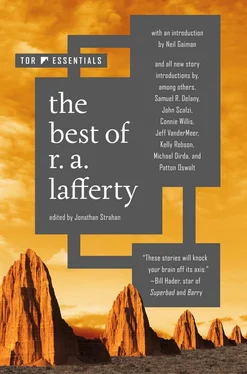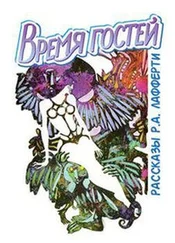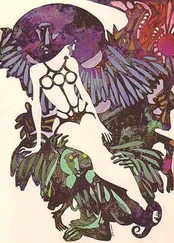See the first paragraph of “Nor Limestone Islands,” a tale arising from Lafferty’s interest in geology, mineralogy, rockhounding, story-mining and architectural and literary lapidaries. (Disarmingly, he had the ability to appear to be an expert in every -ology imaginable.)
That paragraph reads: “A lapidary is one who cuts, polishes, engraves, and sets small stones. He is also a scrivener who sets in little stones or pieces here and there and attempts to make a mosaic out of them.”
With that dubious hook, our Oklahoman leprechaun not only defines a term that may not feel wholly familiar, but also compares the intricately fitted jigsaw-puzzle of an architectural mosaic to the mix-and-match literary method by which he has structured “Nor Limestone Islands.”
Listen to this tale’s limestone salesman make a pitch to a roomful of city officials: “ We … want everybody to come and visit us, but hardly anybody wants to. Right now, my country [Sky-High Stutzamutza] is about three miles from here” [my emphasis].
This spiel evokes part three, “A Voyage to Laputa,” of my most admired book in the world, Gulliver’s Travels. Laputa’s lodestone-directed flying islands first boggled my starving preteen mind in Tulsa, Oklahoma, circa 1958.
Thus, in 1984, I chose “Nor Limestone Islands” to represent R. A. Lafferty in an anthology titled Light Years and Dark: Science Fiction and Fantasy Of and For Our Time . And here is how I introduced it:
“How does a 105-pound girl assemble a thirty-million-ton Pink Pagoda in six hours? R. A. Lafferty will tell you in this charming ‘article’ about floating limestone islands and the intrepid Miss Phosphor McCabe, whose breathtaking photographs of Sky-High Stutzamutza (see plates I to XXII) are unfortunately not included in the text.
“Lafferty, you see, is famous—perhaps notorious is the better word—for the inveterate unorthodoxy of his story concepts and narrative strategies. His work is immediately recognizable as his in a way that the work of other writers is not always identifiable as theirs and nobody else’s.
“This distinctiveness would seem to leave Lafferty wide open to parody, but he writes with such droll originality that any attempt to burlesque him turns instead into a pale pastiche of his methods and hence into a kind of homage.
“New Wave? Old Wave? Who cares? Lafferty is surfing the crest of a comber whose quirky break only he knows how to ride.”
That remains pretty much the case today. Indeed, those who manage to create better than passable parodies-cum- hommages to Lafferty (like Neil Gaiman) usually come away from the experience understanding both how hard such stories are to write and why no one else tries to build a career emulating our sui generis Raphael Aloysius Lafferty.
A lapidary is one who cuts, polishes, engraves, and sets small stones. He is also a scrivener with a choppy style who sets in little stones or pieces here and there and attempts to make a mosaic out of them.
But what do you call one who cuts and sets very large stones?
Take a small lapillus or stone for instance:
The origin of painting as an art in Greece is connected with definite historical personages; but that of sculpture is lost in the mists of legend. Its authentic history does not begin until about the year 600 B.C. It was regarded as an art imparted to men by the gods; for such is the thought expressed in the assertion that the earliest statues fell from heaven.
“Statuaria Ars; Sculpture,”
Harper ’s
Dictionary of Classical Literature and Antiquities .
We set that little stone in one corner, even though it contains a misunderstanding of what fell from heaven: it wasn’t finished statues.
Then we set another small stone:
(We haven’t the exact citation of this. It’s from Charles Fort or from one of his imitators.) It’s of a scientist who refused to believe that several pieces of limestone had fallen from the sky, even though two farmers had seen them fall. They could not have fallen from the sky, the scientist said, because there is no limestone in the sky. (What would that scientist have done if he had been confronted with the question of Whales in the Sky?)
We set that little stone of wisdom into one corner. And we look around for other stones to set.
The limestone salesman was making his pitch to the city commissioners. He had been making a poor pitch and he was a poor salesman. All he had was price (much less than one tenth that of the other bidders) and superior quality. But the limestone salesman did not make a good appearance. He was bare-chested (and colossally deep-chested). He had only a little shoulder jacket above, and a folded drape below. On his feet he had the crepida or Hermes-sandals, made of buckskin apparently: a silly affectation. He was darkly burned in skin and hair, but the roots of his hair and of his skin indicated that he was blond in both. He was golden-bearded, but the beard (and in fact the whole man) was covered with chalk-dust or rock-dust. The man was sweaty, and he smelled. His was a composite smell of limestone and edged bronze and goats and clover and honey and ozone and lentils and sour milk and dung and strong cheese.
“No, I don’t believe that we want to deal with you at all,” the mayor of the city was saying. “The other firms are all reputable and long established.”
“Our firm is long established,” the limestone salesman said. “It has been doing business from the same—ah—cart for nine thousand years.”
“Balderdash,” the streets and sewers commissioner swore. “You won’t even give us the address of your firm, and you haven’t put in a formal bid.”
“The address is Stutzamutza,” the limestone salesman said. “That’s all the address I can give you. There isn’t any other address. And I will put in a formal bid if you will show me how to do it. I offer you three hundred tons of the finest marble-limestone, cut exactly to specification, and set in place, guaranteed to take care of your project, guaranteed to be without flaw, in either pure white or variegated; I offer this delivered and set within one hour, all for the price of three hundred dollars or three hundred bushels of cracked corn.”
“Oh take it, take it!” a Miss Phosphor McCabe cried out. “We elect you gentlemen to do our business for us at bargain prices. Do not pass up this fine bargain, I beg you.” Phosphor McCabe was a lady photographer who had nine fingers in every pie.
“You be quiet, young lady, or we will have you put out of the hearing room,” said the parks and playgrounds commissioner. “You will wait your turn, and you will not interfere in other cases. I shudder to think what your own petition will be today. Was ever a group so put upon by cranks as ourselves?”
“You have a very bad reputation, man,” the finance commissioner said to the limestone salesman, “insofar as anyone has heard of you before. There is some mumble that your limestone or marble is not substantial, that it will melt away like hailstones. There is even a rumor that you had something to do with the terrible hailstorm of the night before last.”
“Ah, we just had a little party at our place that night,” the limestone salesman said. “We had a few dozen bottles of Tontitown wine from some stone that we set over in Arkansas, and we drank it up. We didn’t hurt anybody or anything with those hailstones. Hey, some of them were as big as basketballs, weren’t they! But we were careful where we let them fall. How often do you see a hailstorm as wild as that that doesn’t do any damage at all to anything?”
Читать дальше




![Рафаэль Лафферти - Дни, полные любви и смерти. Лучшее [сборник litres]](/books/385123/rafael-lafferti-dni-polnye-lyubvi-i-smerti-luchshe-thumb.webp)
![Рафаэль Лафферти - Лучшее [Сборник фантастических рассказов]](/books/401500/rafael-lafferti-luchshee-sbornik-fantasticheskih-ra-thumb.webp)